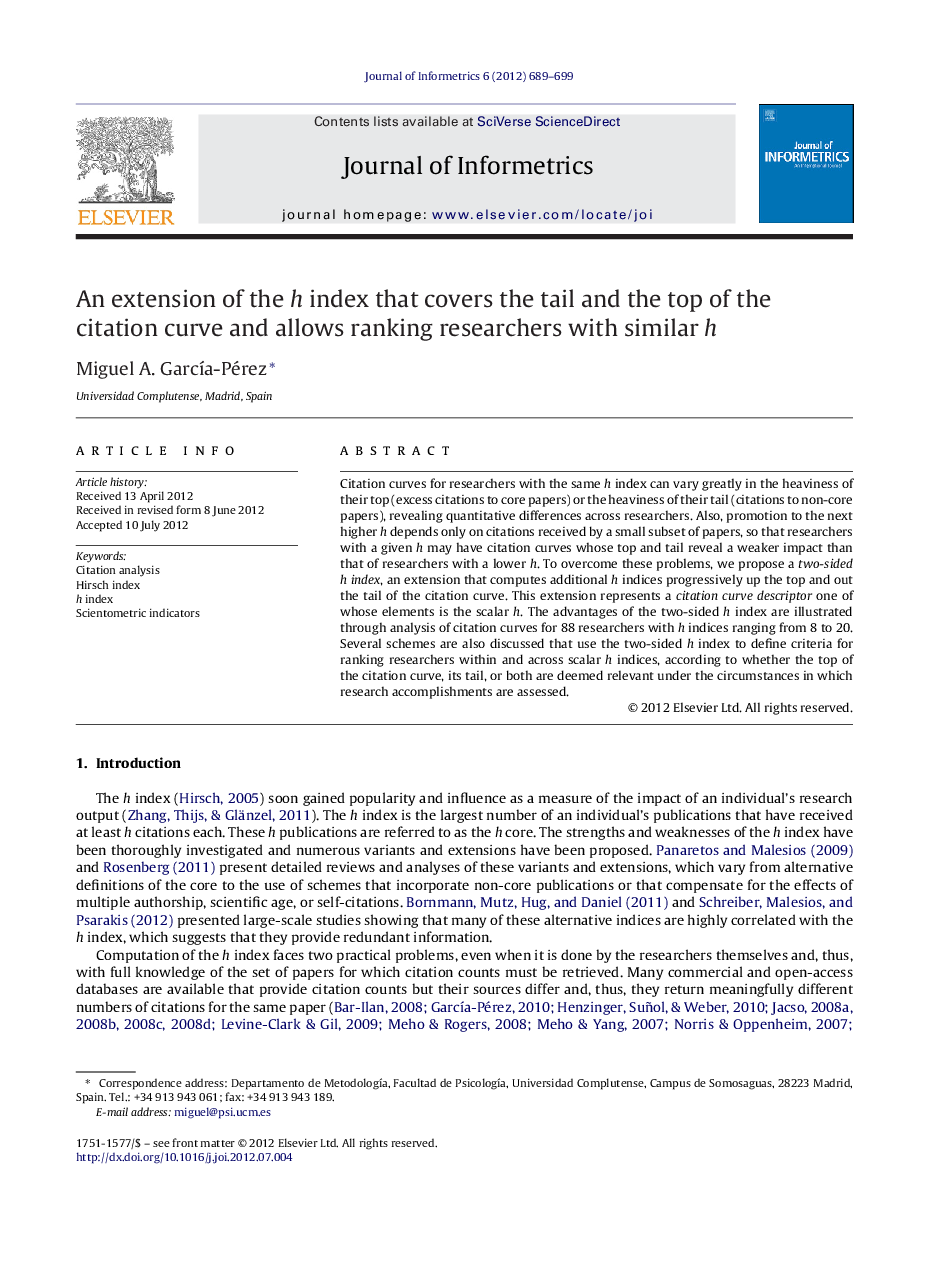| Article ID | Journal | Published Year | Pages | File Type |
|---|---|---|---|---|
| 523214 | Journal of Informetrics | 2012 | 11 Pages |
Citation curves for researchers with the same h index can vary greatly in the heaviness of their top (excess citations to core papers) or the heaviness of their tail (citations to non-core papers), revealing quantitative differences across researchers. Also, promotion to the next higher h depends only on citations received by a small subset of papers, so that researchers with a given h may have citation curves whose top and tail reveal a weaker impact than that of researchers with a lower h. To overcome these problems, we propose a two-sided h index, an extension that computes additional h indices progressively up the top and out the tail of the citation curve. This extension represents a citation curve descriptor one of whose elements is the scalar h. The advantages of the two-sided h index are illustrated through analysis of citation curves for 88 researchers with h indices ranging from 8 to 20. Several schemes are also discussed that use the two-sided h index to define criteria for ranking researchers within and across scalar h indices, according to whether the top of the citation curve, its tail, or both are deemed relevant under the circumstances in which research accomplishments are assessed.
► The h index is extended to vector form to fully represent the citation curve. ► This extension proves useful to differentiate researchers with the same or similar h. ► Criteria are defined to rank researchers according to the extended index.
